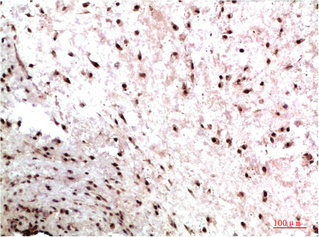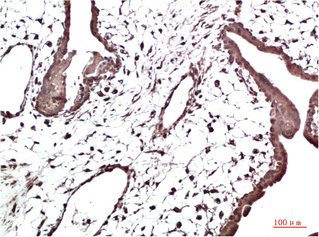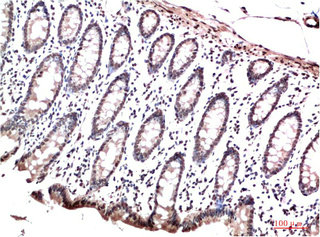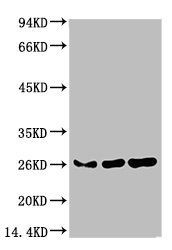Alternative Names
CBX 3 antibody; CBX3 antibody; CBX3_HUMAN antibody; Chromobox homolog 3 (HP1 gamma homolog; Drosophila) antibody; Chromobox homolog 3 antibody; Chromobox protein homolog 3 antibody; GAMMA antibody; HECH antibody; Heterochromatin like protein 1 antibody; Heterochromatin protein 1 homolog gamma antibody; Heterochromatin protein HP1 gamma antibody; HP1 gamma antibody; HP1 gamma homolog antibody; HP1Hs gamma antibody; Modifier 2 protein antibody
Species Reactivity
Human,Mouse,Rat
Immunogen
Recombinant Protein of HP-1γ
Immunogen Species
Homo sapiens (Human)
Purification Method
The antibody was affinity-purified from mouse ascites by affinity-chromatography using specific immunogen.
Concentration
It differs from different batches. Please contact us to confirm it.
Buffer
Liquid in PBS containing 50% glycerol, 0.5% BSA and 0.02% sodium azide.
Tested Applications
ELISA,WB,IHC
Recommended Dilution
| Application |
Recommended Dilution |
| WB |
1:500-1:5000 |
| IHC |
1:50-1:500 |
Storage
Upon receipt, store at -20°C or -80°C. Avoid repeated freeze.
Lead Time
Basically, we can dispatch the products out in 1-3 working days after receiving your orders. Delivery time maybe differs from different purchasing way or location, please kindly consult your local distributors for specific delivery time.
Usage
For Research Use Only. Not for use in diagnostic or therapeutic procedures.









